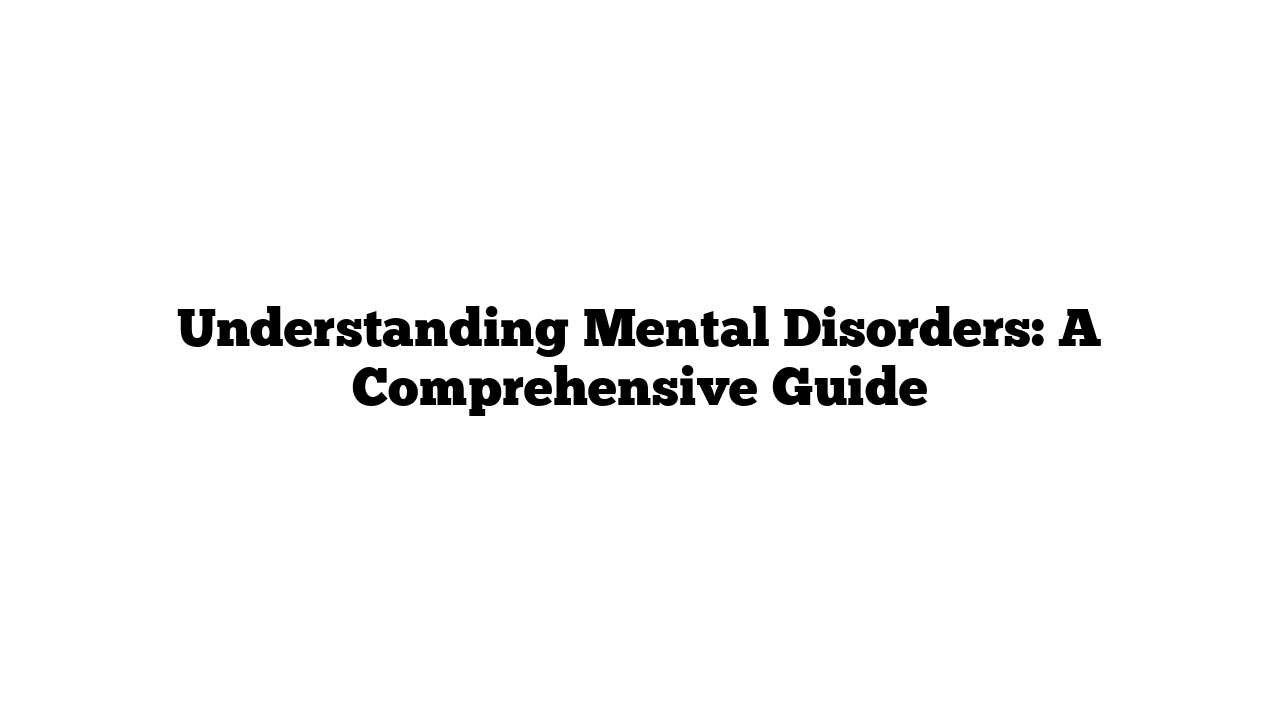Mental health is a critical aspect of overall well-being. Understanding various mental disorders can help demystify them and promote empathy and support. Below, we explore some common mental health conditions, their symptoms, and available treatments.
Post-Traumatic Stress Disorder (PTSD)
Imagine surviving a traumatic event, like a car accident that took your loved ones. Months later, the thought of getting into a car sends chills down your spine. This is PTSD, or Post-Traumatic Stress Disorder.
PTSD occurs after experiencing a major trauma, causing flashbacks, nightmares, and intense anxiety. Everyday sounds related to the trauma can trigger overwhelming fear, making you feel as if you’re reliving the event. According to the American Psychological Association, about 7-8% of the U.S. population will experience PTSD at some point in their lives . Treatments include therapy, medication, and support groups.
Bipolar Disorder
Bipolar Disorder can feel like a wild amusement park ride with extreme ups and downs. Individuals may experience manic episodes, feeling energetic and invincible, followed by depressive phases that bring feelings of despair and hopelessness.
These mood swings can be sudden and intense, often affecting daily life. It’s important to note that bipolar disorder is a medical condition, not just moodiness. Approximately 2.8% of adults in the U.S. experience bipolar disorder . Treatment typically includes medication and psychotherapy.
Schizophrenia
Imagine having an imaginary friend who feels all too real. For someone with Schizophrenia, this experience is a daily reality. They may hear voices or have vivid delusions that make it hard to distinguish between reality and fantasy.
This disorder affects around 1% of the population, and early diagnosis and treatment can significantly improve quality of life. Medications and therapy can help manage symptoms .
Depressive Disorder
Living with depression often feels like being trapped in a world devoid of color. It’s not just a bad day; it’s a persistent emptiness that drains joy from life.
Roughly 280 million people worldwide struggle with depression, impacting their ability to enjoy activities they once loved . If you or someone you know experiences prolonged sadness, seeking help from a mental health professional can provide necessary support and coping strategies.
Anxiety Disorder
Anxiety can be overwhelming, like feeling chased by a bear. It involves excessive worry that disrupts daily life. Symptoms include rapid heartbeat, sweating, and a constant sense of dread.
Anxiety disorders affect about 301 million people globally . Fortunately, therapies such as cognitive behavioral therapy (CBT) and relaxation techniques can help manage symptoms and improve quality of life.
Eating Disorders
An eating disorder is like a cruel bully that distorts your perception of food and body image. Individuals may either restrict their food intake or engage in binge-eating followed by purging.
This unhealthy relationship with food often stems from deeper emotional issues like anxiety and depression. In the U.S. alone, over 14 million people suffer from eating disorders . Treatment involves therapy, nutritional education, and support groups.
Attention Deficit Hyperactivity Disorder (ADHD)
Imagine a circus in your brain with thoughts flying everywhere. This is what it’s like for individuals with ADHD. They may struggle to focus, stay organized, and control impulsive behavior.
ADHD affects about 129 million to 366 million people worldwide . Treatment options include behavioral therapy, medication, and educational support.
Obsessive-Compulsive Disorder (OCD)
Living with OCD is like having a strict parent in your head, constantly nagging you to be perfect. It involves unwanted thoughts and compulsive behaviors, like repeated hand washing or checking locks multiple times.
This disorder affects about 79 million people globally . Treatment typically includes cognitive-behavioral therapy and medication to help manage symptoms.
Autism Spectrum Disorder (ASD)
ASD affects communication and social interaction, making it feel like you’re on a different planet during conversations. Each person with autism is unique, and their experiences can vary widely.
ASD affects about 1% of the global population . While there’s no cure, therapies can help improve communication skills and reduce anxiety.
Sleep Disorders
According to the World Sleep Society, about 45% of people globally experience sleep disorders, such as insomnia, narcolepsy, or sleep apnea. These conditions can disrupt daily life and health.
Proper treatment can improve sleep quality and overall well-being.
Paranoia
For some, paranoia amplifies normal fears to an extreme level. A simple conversation between colleagues can spark suspicion that they’re plotting against you.
This heightened mistrust can lead to social isolation and anxiety. Causes may include trauma and extreme stress.
Dyslexia
Dyslexia affects the brain’s ability to process language, making reading and writing difficult. This condition does not reflect intelligence; many individuals with dyslexia are highly capable but require different teaching methods.
With proper support, like phonics programs and audiobooks, people with dyslexia can learn effectively.
Understanding mental health disorders is essential for fostering compassion and providing support. If you or someone you know is struggling, consider reaching out for professional help. Remember, you are not alone in this journey.
For more information, check out:
By sharing this knowledge, we can create a more supportive and understanding society for those facing mental health challenges.
